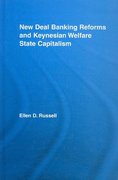Question
PLEASE LOOK ALL THE WAY DOWN TO SEE THE QUESTION, THERE ARE A LOT OF GIVEN CONDITIONS. THANK YOU! THE FIRST PART IS BACKGROUND THAT
PLEASE LOOK ALL THE WAY DOWN TO SEE THE QUESTION, THERE ARE A LOT OF GIVEN CONDITIONS. THANK YOU!
THE FIRST PART IS BACKGROUND THAT HELP YOU ANSWER THIS QUESTION
For a linear city with housing:
Employment & consumption of non housing goods congregates at a single location x = 0, which is the CBD.
Every resident commutes to the CBD everyday and earns exogenous wage of y = 100.
Besides non-housing goods, individual living in the city consume housing too.
A utility function U(c,q) denotes preference, c is consumption of non-housing goods, q is consumption of housing. This function is Cobb-Douglas:
U(c, q) = c^(0.5)q^(0.5) (equation 1)
Cost of commuting is strictly monetary and increases linearly with distance to CBD, so a resident living at distance x (in km) from the CBD incurs a commuting cost of x. Assume that = 10.
Land covered by city is endogenously determined in the model and is represented by the segment on the positive real line between [0, x].
Residents are identical, with an exogenous daily utility level deter- mined outside the model. This is open city. Suppose = 5
Let P(x) be rental price of housing at distance x from CBD, the representative consumer's budget constraint is:
y = tx + P(x)q + c <> 100 = 10x + P(x)q + c (equation 2)
The consumer's problem is:
Max{c,q,x}c^(0.5)q^(0.5) subject to: 100 = 10x + P(x)q + c (equation 3)
Hint: Relative to other consumer problem, there are two main differences here. Residents must choose their location of residence as well as allocate their disposable income optimally between housing and non-housing goods. Second, the price of housing, (the budget constraint), varies with their location choice.
The procedure to solve this model is:
1 Solve the optimal budget allocation between housing and non-housing goods at each location (for a given x).
2 Obtain housing prices by ensuring that, with each consumer allocating optimally his disposable income, utility is equalized across locations in the city and is equal to their outside option = 5 (this is the free mobility condition).
2.1: No consumer substitution
For now, assume that housing consumption is fixed and equal to 1 for every resident.
P(x) can be interpreted as the rental price of one unit of land in the city. The only difference between houses is the distance to the CBD.
Assume that there is competing land use (agriculture) with rent equal to P = 15(exogenous).
THE QUESTION IS HERE BELOW:
2.1.1) Solve for the residential bid-rent function. Tip: use the fact that utility is equalized across all locations in the city and equal to the outside option (i.e. U(c, 1) = 5 x).
2.1.2) Show that rent is decreasing with distance from the CBD.
2.1.3) Solve for the equilibrium extent of the city, x. Tip: use the fact that, at the city limit, one unit of land is equal to agricutural land rent (i.e. P(x) = P = 15).
2.1.4) Show that the equilibrium extent of the city increases when transportation cost decreases.
2.1.5) Calculate aggregate land rent in the city.
2.1.6) Draw a graph to illustrate all quantities.
Step by Step Solution
There are 3 Steps involved in it
Step: 1

Get Instant Access to Expert-Tailored Solutions
See step-by-step solutions with expert insights and AI powered tools for academic success
Step: 2

Step: 3

Ace Your Homework with AI
Get the answers you need in no time with our AI-driven, step-by-step assistance
Get Started


